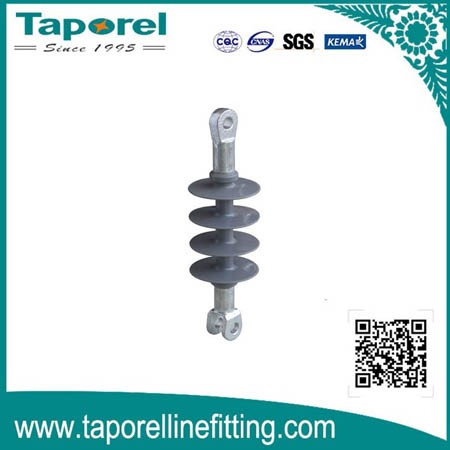The substation is a major new application area for composite insulators, although for the last 20 years the number and proportion of applications in sub-stations have been much smaller than for line insulators. This situation is now changing. Although one of the reasons why silicone composite insulators are now used in substations is due to their success on overhead lines, line insulators and power station insulators operate under different conditions. The location of line insulators is scattered over the entire length of the line, making it very difficult to monitor them.
Substation insulators are usually used in high-voltage equipment and are therefore often not easily replaceable. For example, due to their different characteristics, power station insulators can be divided into two types: Type I - easy to replace; and Type II - difficult to replace. the main examples of Type I insulators are busbar station terminals. type II insulators include GIS bushings, wall bushings, power transformer bushings, hollow insulators for CTs and PTs and hollow casings for ZnO surge dischargers.

Power Station Insulators
For Type II station insulators that are difficult to replace during maintenance, close attention must be paid to service life and long-term performance. For example, severe deterioration of wall casings that have only been in operation for 15 years has been observed.
Large cracks and chalking can occur on the surface of the shed in the outdoor section. These surface cracks appear mainly on the upper part of the casing (i.e. exposed to sunlight). The dusting of the silicone rubber appears on the high-pressure side. As a result of this chalking, the mechanical strength of the surface has been significantly reduced. In addition, the hydrophobic classification is reduced to HC7 in most areas, e.g. HV and central, and the surface shows a hydrophilic state.
The price of the shed material is much lower than the price of the wall bushings themselves and the cost of replacement is much higher than the cost of the shed material. The inability to sample during maintenance makes it more difficult to determine the ageing process and its various mechanisms of action. This example shows that it is more important to monitor the ageing performance of composite insulators in substations than in overhead lines.
The operating conditions of substation insulators differ from those of insulators on overhead lines. In addition, different station equipment operates under its own specific conditions in terms of electric field distribution, bending and torsional stiffness and temperature. It is therefore advisable to apply different tests to check these different insulators and to set different acceptance criteria for each insulator.
There are other developments of interest, such as nanofillers and filler modifications. These can provide better solutions by improving or replacing fibres or matrix materials to improve the shedding/sheathing of composite insulators or FRP poles. Another promising development is the use of new coupling agents or new treatments that improve the critical interface between sheath and rod. Other possibilities include self-diagnostic or even self-healing materials.
Online monitoring is a huge challenge for power grids. The development of industrial robots would be a promising way to carry out non-contact monitoring of insulators, for example, to look for any local heating that might be caused by surface leakage currents, internal defects or degradation of the sheath-rod interface. Currently, it is thought that local temperature increases are mainly associated with degradation of the interface and early signs of decay-like fracture. Non-contact monitoring methods (e.g. IR inspection by helicopter or unmanned aircraft) can detect such localised heating and thus allow the affected insulators to be replaced in time depending on the level of temperature increase.
Taporel Electrical Insulation Technology Co., Ltd.
+86 29 8603 0621
No. 209 Jincheng Road, Jintan District, Changzhou City, Jiangsu Province, China
Copyright © Taporel Electrical Insulation Technology Co., Ltd. All Rights Reserved | Sitemap
